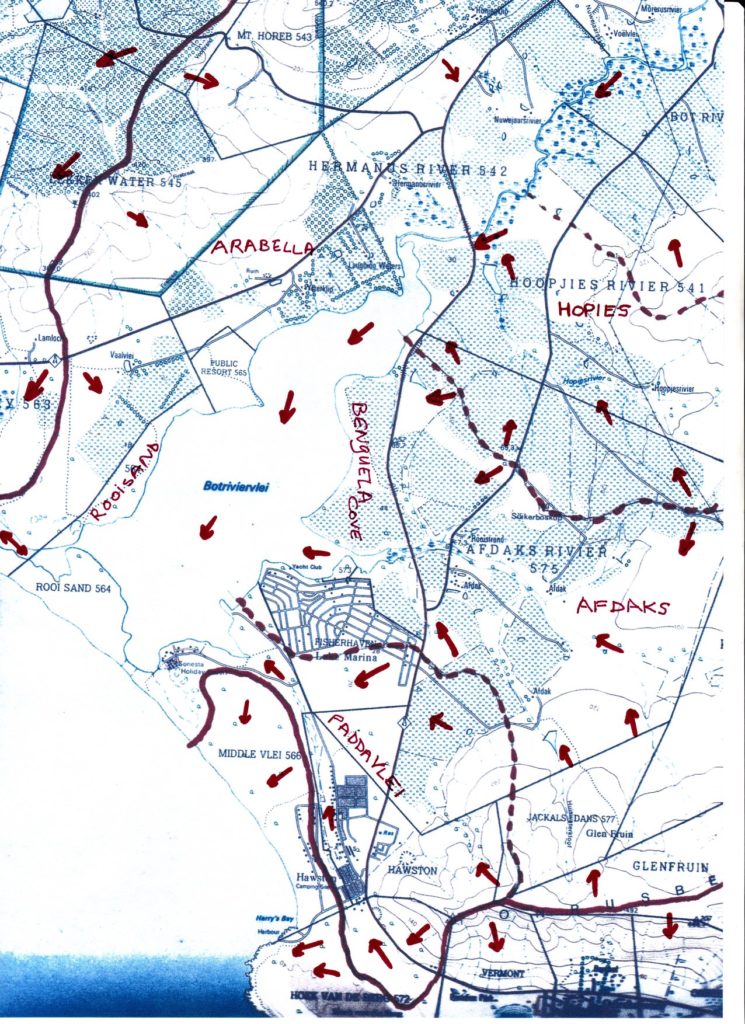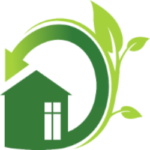Activity of Botfriends 2019 at the AGM: Chairperson’s report May 2019


Thank you all for attending and giving up your Saturday morning. It gives me pleasure to report on what Botfriends has been up to since the last AGM.
This committee has operated since September 2018. Our focus is outlined in our mission and vision statements published in our first newsletter in October. Considerable progress has been made in re-establishing Botfriends.
Botfriends wants to achieve a clean, healthy, alien free environment by working in harmony with nature, supplying maximum services to the people who live in and visit the environs of the Bot River Estuary. Any real progress on the ground has to be through private funding. Ward 8 is particularly bad in NOT having had the environmental laws applied in the past decade and there is no overall management plan in place. We have already reached the stage where, in many areas of Ward 8, the costs of reducing fire risk and re-establishing wetlands is now so high that large areas have been abandoned effectively.
Our regular newsletters have covered some of the issues we have dealt with, which include the following:
Workshopping and updating the constitution (Wildlife and Environmental Society of SA). Establishing the newsletter, six of which we have produced. These include comments on various topical issues such as the future of the wild horses, respecting new building sites, bee keeping, fire issues, Lamloch elephant issues, alien vegetation issues, fencing at Flamingo Bay and estuary management issues. We welcome articles that are related to environmental issues of the estuary and its environs.
We also attend meetings at BREF, Ward 8 and PJAT and report back on environmental issues. We have registered on issues such as the Salmon farm proposal and the Lamloch proposal. We have established contact with the Wild horse group, Benguela Cove and Arabella. We have expanded paid up membership to 62. The face book page is active and during the course of the year had more hits and likes than most other groups. The web site is established but not yet active.
A committee tour of the estuary environs was organised. Alan will talk about a similar tour for friends of the Bot.
The reports on estuary management, coastal management policy, local fire policy document, and Invasive species report for South Africa have been obtained and reports on how these affect the estuary and its environs have been summarised and commented on. These comments have been forwarded to the relevant authorities. Special meetings have been attended on some of these issues such as the fire policy and the coastal management policy.
Cooperation with the FRA on environmental issues of the walkway, road changes in Durban Road and alien clearing of plots have been established. We have re-established our membership of WESSA through Patrick Dowling of Western Cape WESSA and they have committed to subsidising our membership for the first two years.
A funding proposal for alien clearing to Whale Coast Conservation was submitted but was not successful unfortunately.
Data has been gathered on species diversity for this area and all the environmental assessment reports for the area read and summarised. An assessment of the geology and status of alien species invasions has been made. This is in its final stages and will be released soon. Ward 8 has consistently had funding for alien clearing diverted. There is no overall plan for the management of species diversity and the numerous wetlands for this area to establish corridors of biodiversity through the area. The risks for devastating fires has increased alarmingly in the last three years so timing has become critical due mostly to incorrect management techniques being applied.
Other activity of Botfriends 2019 are reports on fire risk and gathering data on clearing costs.
Because of the high fire risk to houses in our area due to the increasing spread of Port Jacksons and myrtles amongst our precious fynbos heritage, Botfriends is in the process of trying to get private funding for the Ward 8 area to be cleared of alien invasions; this is a start to having a viable plan drawn up for the management of the area. A three year project proposal, with budgets has been drawn up. This will shortly be submitted for funding appeals.
A start has been made on the clearing of public land. Bruce Bayer has cleared 15.3 ha out of his own pocket. Botfriends has coordinated with him to clear some areas and cleared additional areas on either side of the entrance to Fisherhaven (9ha for just over R5000 in 15days). Careful costing has been done on cleared sites (averaging about R2500/ha). These costings show that properly cleared areas are being done at lower costs than anyone else’s. Follow-up costs reduce dramatically if done in time, allowing indigenous species to outcompete the aliens (less than R1000/ha). At the moment there is no reasonable data on the costing of clearing alien vegetation. A report on costing is being compiled from our data and will be released shortly.
A section at the entrance cleared by Botfriends, with only short Indigenous species left, was, however, mowed two weeks later. All fynbos in this section has therefore been eliminated or severely set back: these and other problems are being taken up with the appropriate authorities.
Additional activity of Botfriends 2019 includes: a proposal document for changes to the estuary management was put forward to open debate on this subject. Some feedback was obtained and the matter is ongoing.
Botfriends also made Christmas trees available to inhabitants of the area – invasive pines were chopped down at Rooisand Horse Ranch on the western side of the estuary. Donations of R320.60 were collected.
We have established and met with people at Cape Nature, DEA&DP in terms of LUP, biodiversity corridors, management strategies and EIAs. Progress is slow and meetings promised for last year have not been done. Our recent submission about the Flamingo Bay fence was acknowledged and we had a reply from the Central Region District Manager of Cape Nature, Tierck Hoekstra. He has referred the matter to the DEA&DP but noted that, and I quote: “ It is however clear to me that this fence is illegal and needs to be removed, but this instruction must come from DEA&DP as the mandated authority in terms of ICMA.
The importance of the environmental issues around the estuary and Ward 8 are receiving more attention from government and there exists the potential for increased funding, this is however a long slow process. Timing has become critical for this area and private funding seems to be the only real hope for the immediate future.
Finally, a special thank you to the Lake Marina Yacht Club for this venue. To my committee, a special thanks and especially to the secretary. Thanks also to Rob McDavid, Bruce Bayer, Dr. Allen Heydorn, Prof. George Branch, Rhett Smart and Pieter van Zyl for their assistance, advice and cooperation. Thanks also to Nina and Frank Van de Velde for assisting with the elections.
The committee appreciates any input and assistance from members of Botfriends; do stay in touch. I trust we can work together in the coming year to achieve a clean, stable and sustainable estuary and environs. Please feel free to enjoy some refreshments with us after the meeting.
Other activity reports of Botfriends 2019 are available on Greenheart, and an initial report from last year

Recent Comments